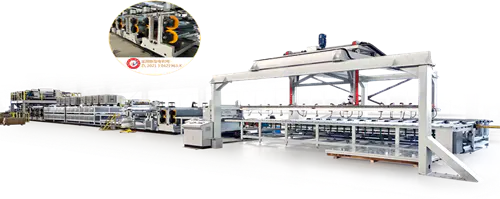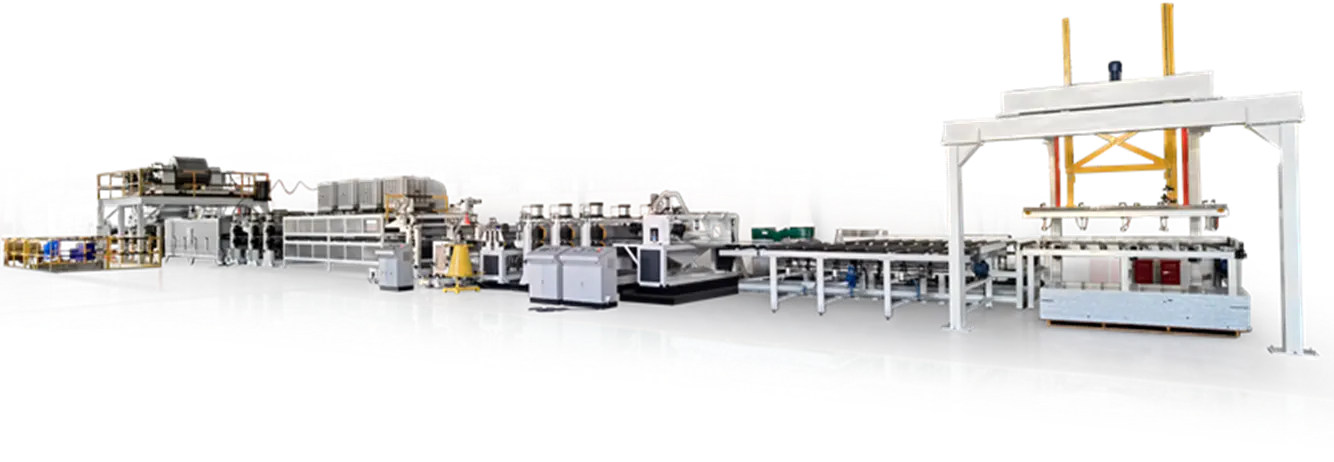Aluminum composite panels (ACPs) have revolutionized the architectural and construction industries with their versatility, durability, and aesthetic appeal. These panels consist of two aluminum sheets bonded to a non-aluminum core, offering a lightweight yet sturdy material suitable for a range of applications. The introduction of 3D Aluminum Composite Panel Production Lines has further elevated the possibilities and quality of these panels.
The 3D Aluminum Composite Panel Production Line represents a significant advancement in manufacturing technology, integrating precision engineering and innovative design capabilities. These production lines utilize state-of-the-art machinery and processes to create ACPs with three-dimensional textures, elevating their visual impact and functionality.
One of the key aspects driving the adoption of 3D production lines is the demand for enhanced aesthetics in architectural design. Traditional flat ACPs have long been favored for their clean, modern appearance, but the introduction of textured surfaces through 3D production has expanded design possibilities. Architects and designers now have access to panels with raised patterns, embossed textures, and unique finishes that add depth and character to buildings.
Moreover, the utilization of these 3D production lines has not only transformed the visual aspects but also improved the practical functionalities of ACPs. Enhanced surface textures can offer increased resistance to scratches, dents, and weathering, making these panels more durable and suitable for exterior applications in various climates.
The production process itself involves intricate steps that highlight the precision and expertise required. It starts with the preparation of the aluminum sheets, followed by the bonding process with the core material, which can range from polyethylene to mineral-filled fire-retardant compounds. The introduction of the 3D element involves specialized rollers, molds, or embossing techniques that imprint the desired texture onto the panels.
Quality control throughout the production line is paramount to ensure the panels meet stringent standards. Modern production lines incorporate advanced sensors, automated inspection systems, and quality assurance protocols to guarantee the consistency and excellence of each panel produced.
Beyond architecture, the application of 3D aluminum composite panels extends to various industries including automotive, signage, and interior design. The versatility of these panels makes them an attractive choice for creating visually appealing, durable, and functional surfaces in diverse settings.
In conclusion, the integration of 3D Aluminum Composite Panel Production Lines has ushered in a new era for ACPs, offering not only enhanced aesthetics but also improved durability and functionality. As technology continues to advance, these panels are poised to remain a cornerstone in modern construction and design, inspiring innovative applications and pushing the boundaries of what's possible in architectural expression.
The demand for 3D Aluminum Composite Panel Production Lines continues to grow as architects and designers seek novel ways to merge functionality with artistic expression. These lines not only elevate the visual appeal of buildings but also contribute to sustainability efforts through their lightweight and recyclable nature. As technology evolves, these panels stand at the forefront, offering a canvas for creativity and innovation in modern construction and design practices.

 中文简体
中文简体 English
English Português
Português русский
русский Español
Español عربى
عربى








